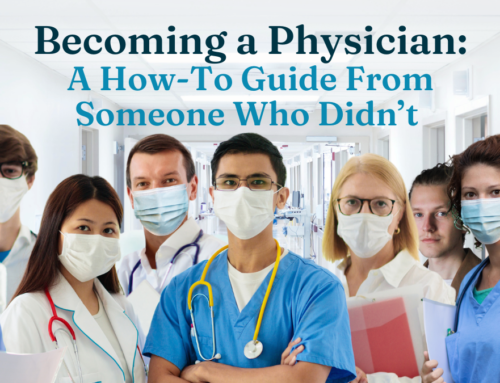
Written By: Angie Rodgers, President and CEO, Association of Arizona Food Banks
It has been more than 30 years since the link between health disparities and social determinants of health was established. We have made significant headway in recognizing and researching the ways that individual behaviors, environmental and economic factors influence health outcomes. As most practitioners know, much of this work was outlined in “Healthy People 2020.”
Even a brief look at its goal to “Create social and physical environments that promote good health for all” quickly connects social determinants to hunger, and, perhaps even more, to poverty.
The problem
According to data from 2016, 1.03 million Arizonans (nearly 1 in 6) don’t know where their next meal is coming from. Worse, for children this number is higher at nearly 23% – almost 1 in 4. This makes Arizona the 6th worst state in the nation for children at risk of hunger.
In Maricopa County, 32% of the almost 600,000 food insecure people do not qualify for SNAP (formerly known as food stamps) or other nutrition programs. This means that those households are 100 % reliant on the emergency food network and private assistance from relatives and friends help feed their families. And even those who do receive SNAP sometimes access food banks to stretch their food dollars.
Feeding America estimates that those families need an additional $300 million in income to be food secure, highlighting the scope of the need.
Lack of access to healthful foods impacts many different community health problems. Obesity, diabetes, stunted development in children, oral health, and social interaction are all impacted by food insecurity.
Among nonelderly adults with household incomes less than 200% of the Federal Poverty Level, food insecurity is associated with clinical evidence of hypertension and diabetes.
The Food Research Action Center highlights hunger and obesity by saying:
“Those who are eating less or skipping meals to stretch food budgets may overeat when food does become available, resulting in chronic ups and downs in food intake that can contribute to weight gain.”
In children, Feeding America finds that kids growing up in food-insecure families are vulnerable to poor health and stunted development from the earliest stages of life. Pregnant women who experience food insecurity are more likely to experience birth complications than women who are food secure.
One organization, two solutions
At AAFB, we address two issues. The first is helping to ensure that food insecure Arizonans have enough to eat. We began with a simple goal – rescue as much produce as possible to help food banks provide healthy choices for their clients.
Since the beginning of the program, AAFB has transported more than 1 billion pounds of food, much of which is fresh fruits and vegetables. The project has evolved from actual gleaning (combing fields after a harvest for food left behind) to supporting the joint efforts of our regional food bank members (St. Mary’s Food Bank Alliance, United Food Bank, Desert Mission Food Bank, Yuma Community Food Bank and Community Food Bank of Southern Arizona) and other key partners like St. Vincent de Paul. As a result, nearly 47% of the food distributed today by our partners is fresh produce and efforts to increase that are ongoing.
And at the heart of this work? Three 18-wheel semis and their drivers.

While people may not immediately associate hunger relief with tractor trailers, these logistics efforts help people at risk of hunger benefit from the fresh fruits and vegetables that Arizona’s rich agriculture and generous donors provide.
More and more food banks across the nation are focusing on providing the right calories, not just enough calories, to enable clients to lead more healthy lives. This can be difficult, as shelf-stable food is easier to handle and distribute, one the reasons why our work to increase produce is so critical. In fact, when Arizona food bank coolers are full, we work with out of state partners to get as much produce as possible to the people who need it most. Last year, we helped get produce to 25 states across the nation!
The second issue AAFB addresses is preventing hunger. We promote programs that benefit people at risk and ensure a strong state and federal safety net. We also fight efforts to reduce benefits or decrease accessibility. Recent threats to SNAP (formerly known as food stamps) through work requirements and time limits could mean more people accessing the emergency network of food banks and the food pantries and soup kitchens that get supplies from them.
So what is the next step? How do we further our work in addressing hunger as a social determinant of health? The data will show that there are some key populations that should be targeted. Older adults who live in isolation, with no access to grocery or transportation or struggle with mobility. Young children who don’t yet have access to school meals or need nutrition education as they develop their lifelong relationship to food. And of course, those with chronic medical conditions. How do we ensure that those suffering from diabetes or hypertension have adequate nutrition and follow up when prescribed medication dictates “take with food?”
There is an opportunity to add to this partnership. If you aren’t already at the table, join us. You don’t have to do it alone. Be curious- take a few extra moments to find out how your patient’s food insecurity might impact medication compliance or ability to pay their bills. Find your resources- where are the pantries in your community (hint: www.azfoodbanks.org)? And be bold! Join our advocacy list to add your voice to our anti-hunger efforts!
I’m glad that people who are interested in public health have been reaching out and supporting our work. Hunger and poverty are big problems, and we’re going to need everyone involved in the solutions.





